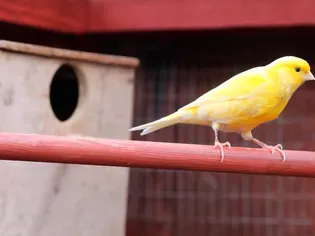White-Eyed Conure (Parakeet): Bird Species Profile
Updated on 05/26/24

Discover the Enchanting World of White-Eyed Conures: A Comprehensive Guide
Introduction
White-Eyed Conures, also known as White-Eyed Parakeets, are captivating small parrots that enchant bird enthusiasts worldwide. Their playful nature, stunning plumage, and intriguing vocalizations make them exceptional companions. In this comprehensive bird species profile, we delve into the fascinating realm of White-Eyed Conures, exploring their captivating traits, habitat, diet, behavior, and care requirements.
Taxonomy and Appearance
White-Eyed Conures (Pyrrhura leucotis) belong to the family Psittacidae, the order Psittaciformes. They are native to Central and South America, primarily found in moist forests and shrublands. With an average lifespan of 25-30 years, these small parrots typically reach a length of 11-13 inches and weigh around 4-6 ounces.
Their distinctive appearance sets them apart from other conure species. They boast a vibrant green plumage, with a bright yellow head and chest, a black beak, and a telltale white ring around their eyes that gives them their name.
Habitat and Distribution
White-Eyed Conures inhabit a wide range of habitats, including rainforests, woodlands, savannas, and palm groves. They are found in countries such as Bolivia, Brazil, Colombia, Ecuador, Peru, and Venezuela, primarily at elevations between 1,000 and 4,000 feet.
These parrots are highly adaptable and have been known to thrive in both humid and dry environments. They are social birds that live in small flocks of up to 20 individuals, roosting together in trees or cavities.
Diet and Nutrition
In their natural habitat, White-Eyed Conures have a diverse diet consisting primarily of fruits, seeds, nuts, and insects. They forage in trees and shrubs, using their strong beaks to crack open fruits and crush seeds.
In captivity, they require a balanced diet that mimics their natural food sources. A high-quality parrot pellet mix should form the foundation of their diet, supplemented with fresh fruits and vegetables such as apples, bananas, blueberries, broccoli, and carrots. Nuts, such as almonds and walnuts, can also be offered in moderation.
Behavior and Communication
White-Eyed Conures are known for their lively and playful behavior. They are highly active and spend much time climbing, bouncing, and exploring their surroundings. They are also known to be vocal birds, emitting a range of calls and whistles.
Communication is an essential aspect of White-Eyed Conure behavior. They use vocalizations to convey emotions such as excitement, fear, and aggression. They also engage in body language, such as feather fluffing, wing spreading, and tail wagging, to communicate their intentions.
Training and Socialization
White-Eyed Conures are intelligent birds that can be trained relatively easily. They are eager to learn new tricks and commands and respond well to positive reinforcement.
Socialization is crucial for White-Eyed Conures. They are highly social creatures that thrive in the company of their own kind or human companions. Providing them with ample attention and interaction is essential for their well-being.
Health and Care
Like all birds, White-Eyed Conures require proper care and a suitable environment to thrive. They need spacious cages or aviaries that allow them to fly and exercise freely. Maintaining cleanliness and hygiene is also important to prevent health issues.
Regular veterinary checkups are essential to monitor their health and detect any underlying problems. A balanced diet, proper hygiene, and regular exercise are key to ensuring the longevity and well-being of White-Eyed Conures.
Examples of Captivating Traits
* Intelligence: White-Eyed Conures are highly intelligent birds that can learn a variety of tricks and commands.
* Playfulness: These parrots are renowned for their playful nature, engaging in acrobatics, climbing, and exploring their surroundings.
* Vocalizations: They possess a wide repertoire of vocalizations, including cheerful whistles and melodic calls.
* Bonding: White-Eyed Conures can form strong bonds with their human companions, becoming affectionate and loyal pets.
* Longevity: With proper care, these parrots can enjoy a long and fulfilling lifespan of up to 30 years.
Conclusion
White-Eyed Conures are captivating birds that offer a unique and enriching pet ownership experience. Their vibrant plumage, playful personality, and endearing vocalizations make them a joy to behold. With proper care and attention, White-Eyed Conures can thrive as beloved companions for many years to come.
Explore More Pets

Small Bird Breeds
Gloster Canary: Bird Species Profile

Small Bird Breeds
Java Finch: Bird Species Profile

Small Bird Breeds
Zebra Finch (Chestnut-Eared Finch): Bird Species Profile

Small Bird Breeds
Alexandrine Parakeet: Species Characteristics & Care

Small Bird Breeds
Canary: Bird Species Profile

Small Bird Breeds
Lovebird (Pocket Parrot) Species Profile

Small Bird Breeds
A Guide to Pet Budgie Birds

Small Bird Breeds
Types of Small Parrots
